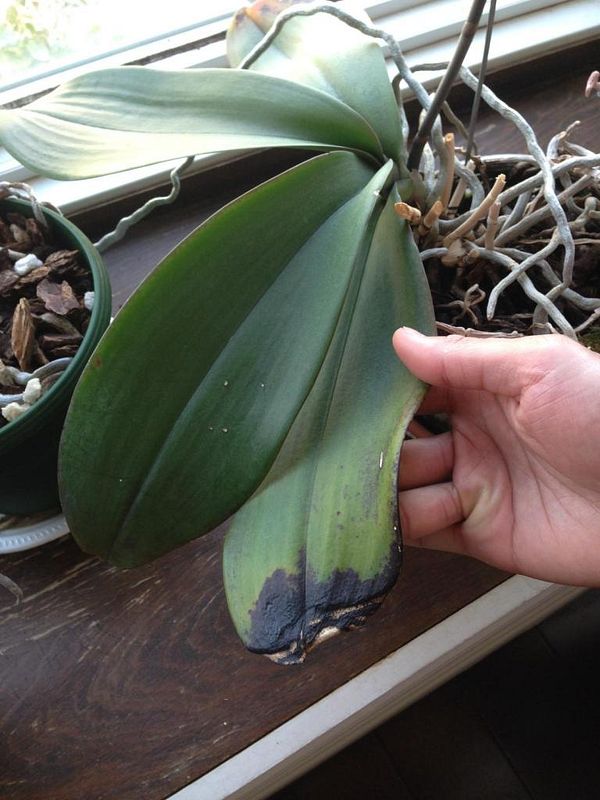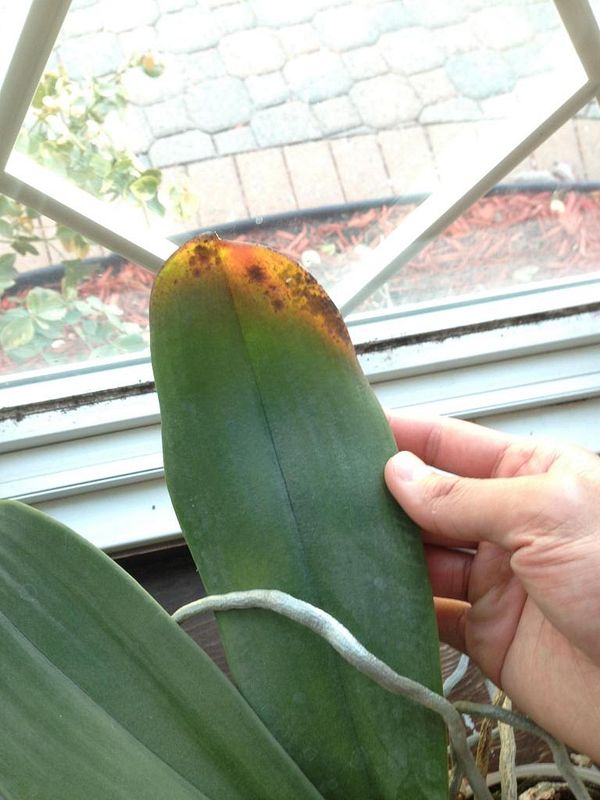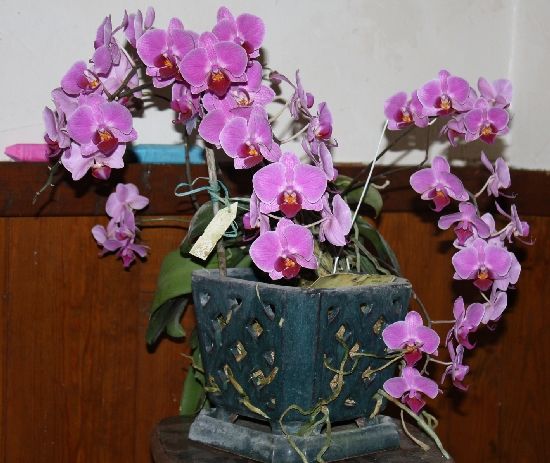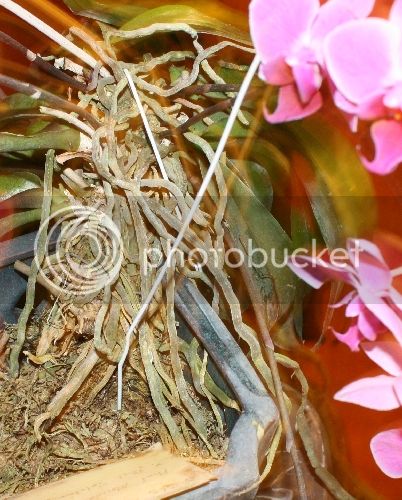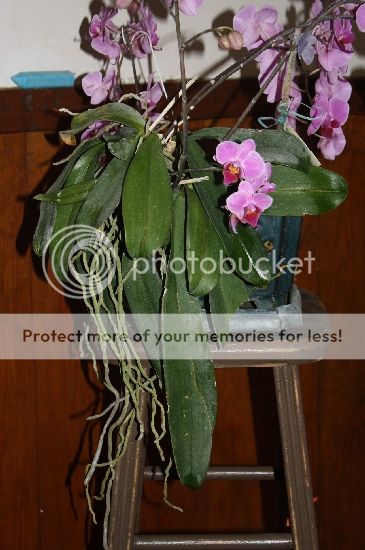How do you come up with that determination? Especially when he stated " and yet I fertilize them rarely. Like 5 times last summer and none at all the whole winter"
I can tell by looking at the leaves
There are healthy looking white roots all over the place in the picture!
Yes but probably just as many not so good ones or an accumulation of dead roots/decomposed mix/wastes/fungi/salts etc.
If you look closely in the middle of the pot you can see a shrivelled root. As soon as this starts to happen in a pot you should repot. Even though the plant will continue to grow outside the pot and produce good roots, I have found that unless you remove the old portion you often continue to have problems. This may be related to a microbial issue?
guaranteed....I've seen this many times before and the problem was always in the old roots. in fact just last weak I had the same problem with a Sedirea japonica. Its an accumulation of crap in the pot and when removed the plant resumes normal leaves.
